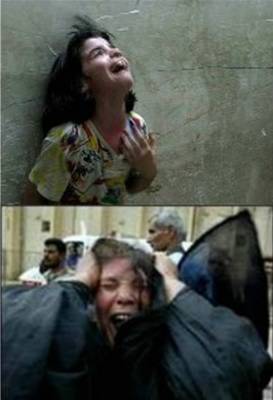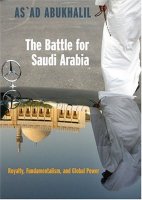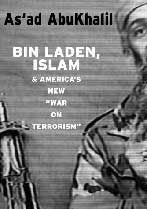I sent the map that is being circulated about areas of influence in Damascus to Akram in Syria to ask for his opinion. He wrote:
"It’s true to a large extent but the map should be read with
cautious and in the light of the following remarks:
- I can’t explain the difference between the light and the dark degrees of the same color. Dos the darker color mean tougher control? I can’t tell.
- Important part of the countryside of Damascus is absent from the map: al-Kalamoun Plateau located to the north of Damascus (on the map to the above al-Tall). This plateau contains many major towns:
- Seidnaya, Ma’aloula: Christian majority, label is green though the roads to these towns are dangerous.
- Yabroud, Qara: Christian-Muslim, dominated by local militias with some unwritten understanding with the military. In Yabroud for example, as I’ve been told, the gunmen organize the traffic within the town!!!
- Nabeq, Deir ‘Attyia: Christian-Muslim, label is green
- The term “controlled” should be taken in its relative meaning which varies with each case:
- In areas colored with red the presence of the government is reduced to the “long arm” of the air force and the artillery and to the basic services that can be described as remote (drinking water and sewerage, electricity and telecom) when they are available. I also can tell that the government is still supplying flour to the bakeries and the government employees are still receiving their salaries even in cases where they can’t reach their workplaces (schools, municipalities, police stations,…). While the armed groups are deployed extensively in these areas, they can’t (and possibly they don't care to) impose a government-like authority, even if they claim the contrary, though they roam these towns and between them with their 4x4 vehicles or set up roadblocks and checkpoints and inspect the passing cars.
- The case of Jobar: Jobar, located in the eastern part of Damascus, is, administratively, one of the Syrian capital’ neighborhoods, but from both demographic and urban-texture points of view, it can be considered a separated town that belongs to the countryside more than to the city itself (if you look at Google Maps you can see that it’s connected to the neighboring town of Zamalka (which, in turn, is connected to Irbeen and so on, while it’s separated from Damascus by a tiny open terrain). Until three or four months ago, Jobar was under the full control of the regime, but since then, it started to be infiltrated by the armed groups, with few gunmen in the first days, then with tens and then with hundreds or perhaps thousands (I can’t tell) under the nose of the lcorrupt security forces and with collaboration of sympathized residents. However, it’s hard to say that Jobar is a red area. Labeling it with blue would be more accurate (at least for the time being).
- The case of Jaramana: Jaramana is a town located to the east of Damascus and is mainly resided by Christians and Druze (the readers can refer to some of my previous post about this town). The green in the case of Jaramana means that the town is under the control of the Popular Committees (local armed groups who bear the responsibility of protecting their own town with very loose coordination with the security forces). The municipality and the other public services are fully operable.
- The case of Zabadani: this town is located to the north east of Damascus bordering Lebanon (the upper-left corner of the map) in the heart of an area known for its touristic advantages (Bloudan, Boukein, …). As far as I know, the town is controlled partially by local militias and it’s better to be labeled with blue.
- Some places labeled with blue can’t be considered “under mixed control”, but rather under no control. They resemble the Wild West of the 19th century more than anything else where law is enforced selectively and with a discretionary manner by local armed groups of both sides and random killing, looting and mutual kidnapping (for ransom or for hostage exchange) are very common practices committed by all parties and by security personnel working on their own. This case applied particularly on Qadam, Haoush Blass, Sbeineh (located in the map center).
- I can’t describe myself as a military expert nor do I pretend that I know every in the battleground, but he are some remarks that must be taken with great cautious:
- The human losses of both sides (and among the civilians of course) are much, much, much bigger than it is announced. Each side knows very good its own losses and the losses of the other side but they are accomplice to hide the exact numbers. It’s also amazing to notice that the number 30-39 thousands dead, , circulated in the international media, is still steadfast for several months without being challenged by any of the regime’s backers or enemies. Is this the limit that the great forces (US, Russia) can bear before they feel the need to intervene to stop the this senseless massacre in Syria.
- Large part of Damascus countryside is under the rebels de facto control. For the Syrian regime, the first concern for the moment is to keep “the core” Damascus (excluding Jobar which is officially part of the “city”) under its firm control, while the outskirts (except Jaramana) remain a battleground of an endless number of attacks and counter-attacks that continue until the regime falls or an international solution matures."









